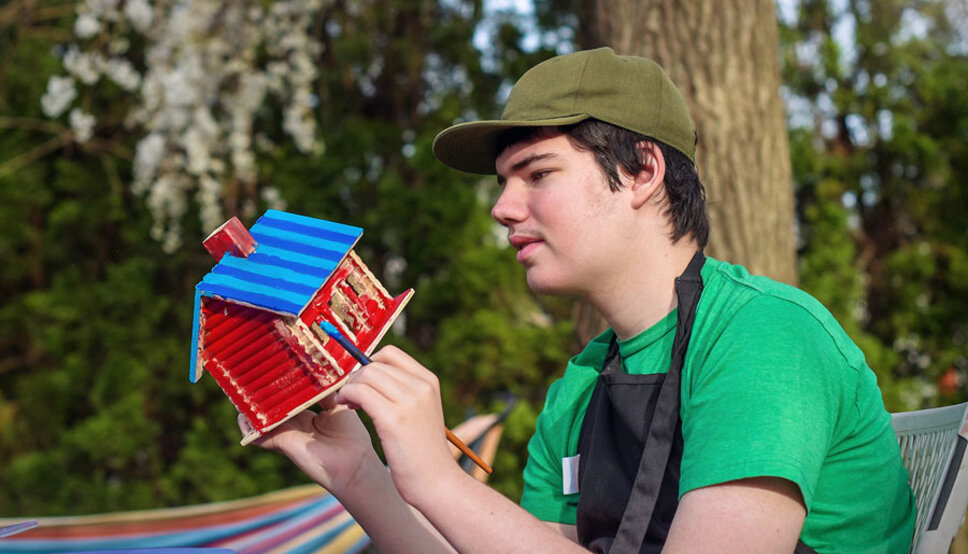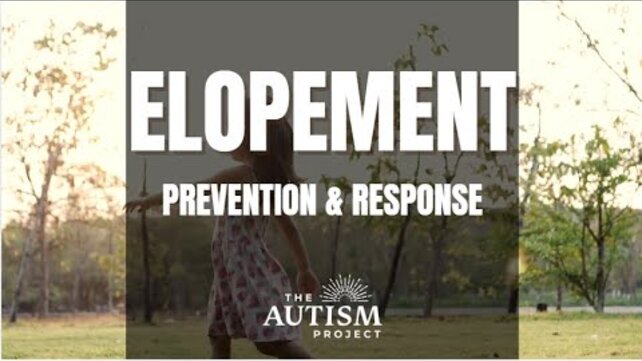Supporting Children on the Spectrum During Summer Break

Every summer, Rhode Island children and families enjoy cookouts, beach trips, and days at the pool. However, for children on the spectrum, the lack of structure and predictability that comes with being out of school can pose significant challenges. Without the critical routines and visuals that children often rely on, days can feel unpredictable and chaotic. That lack of structure, in combination with the ability to spend more time outdoors, can lead to an increase in the opportunities for and incidents of elopement.
What is elopement?
The term “elopement” refers to an incident in which a person who requires supervision to stay safe leaves a safe and supervised area. Elopement is also sometimes referred to as wandering or bolting. Typically, elopement occurs for one of two very broad reasons. Either the child (or in some cases, adult) is leaving the supervised area in order to obtain something outside of that area (such as an item, an experience, an opportunity to explore, etc.), or they are avoiding or escaping something within that area (sensory overload, change in routine, overwhelming tasks, etc.).
How can we determine why someone elopes?
There are several steps that a family can take to address elopement. Families can start by looking for patterns. When the child elopes, what time of day is it? What is happening at the time? Where do they go? If they got to their desired destination, what did they do when they got there? Collecting this information in writing can be very helpful in looking for patterns. These patterns can give us a clue as to what the child is seeking or avoiding, which can then help us to put proactive supports in place. For example, if the child is always eloping during family parties, we can offer the child coping tools, like:
- Talking with them to provide a preview of who is coming to the party, what will happen at the party, when the party will be over, and what the child can do if they need a break from the party
- Designated break space
- Noise cancelling headphones
Understanding the patterns allows us to proactively provide support.
What changes to the physical space can be made to prevent elopement?
If a child is prone to eloping, doors and windows should be locked at all times. Ideally, they would also have alarms to indicate to the people in the home when doors and windows are opened. The National Autism Association offers the “Big Red Safety Box” that includes two door/window alarms at no cost to families.
In addition to alarms, the Big Red Safety Box also includes stop signs. Placing physical stop signs on doors and windows can provide the child with a visual cue not to exit through the door or window.
How can we increase structure to prevent elopement?
As mentioned previously, predictability and routine are critical for many autistic children (and children in general). When routines change, or when there is a lack of structure, children may be more prone to elopement. Creating a structured summer routine (as well as morning, evening, and weekend routines when the child is in school) can be very helpful for the child’s regulation, which in turn can help to prevent elopement.
What should you do in the event of an elopement?
In the event of an elopement, call 911 immediately. Do not wait. Many families will wait a few minutes and see if they can locate the child on their own. Those few minutes are critical. We want as many people looking for the child as possible, and do not want to waste critical time. When calling 911, notify the dispatcher of a few things:
- the child is autistic
- arrive at the scene with lights and sirens off
- start the search with water first
In lethal incidences of elopement, over 70 percent are caused by drowning. Many autistic children are attracted to water and may not be aware of the threat to their safety that water poses. For this reason, first responders should start their search with water.
Elopement Prevention and Response
Learn even more tips to help prevent elopement from The Autism Project on their YouTube channel.

Forming a village of support
When a child is prone to elopement, it has significant impacts on both the child and their family. For the family, coping with elopement requires constant vigilance. The Autism Project routinely emphasized that parents and caretakers should have family, friend, community, and Autism Project support for elopement. Enlist family, friends, and trusted neighbors into your “village of support.” Family members and friends can assist with a “tag, you’re it” protocol at outdoor events. One person is assigned to monitor the safety of the child. When that person needs a break, they tag in a trusted family member or friend to take over. Breaks from that state of hypervigilance are critical for caretakers. Additionally, have conversations with trusted neighbors. Letting neighbors know that the child is prone to elopement then means that if they see the child unattended, they can take action and notify the family. In addition, any neighbors with pools should be informed that those pools need to be locked behind gates and fences when not in use.
First responders can also be added to your support network. By attending community events, nights out, touch-a-truck events, trunk or treats, or other events hosted by first responders, the child can begin to form relationships with the first responders proactively. The child becomes comfortable seeing a first responder in uniform, which then prevents that child from avoiding first responders in the event of an elopement. In addition, the first responders get to know the child, and learn tools and strategies to interact with the child. Those tools and strategies can then be implemented during an elopement event.
Implementing proactive strategies and having an elopement response plan are invaluable tools to ensure the safety of a child who elopes. Structure, schedules, and routines are critical tools for any child, but particularly for a child on the spectrum. As Peter Vermeulen and Kobe Vanroy write in What Really Works for Children with Autism, schedules, structure, and visual supports provide “clear and comforting predictability.” Predictability and routine help children to feel safe, which can in turn help to keep them safe.
For more family support resources, visit The Autism Project.
About the Author:

Listen to the Mindcast episode featuring The Autism Project's Ariana DeAngelis, MEd. Ariana shares her insight on keeping kids with autism safe during the summer.
Find a Doctor

The right provider is in our network
Search more than 1,200 providers in our network.




